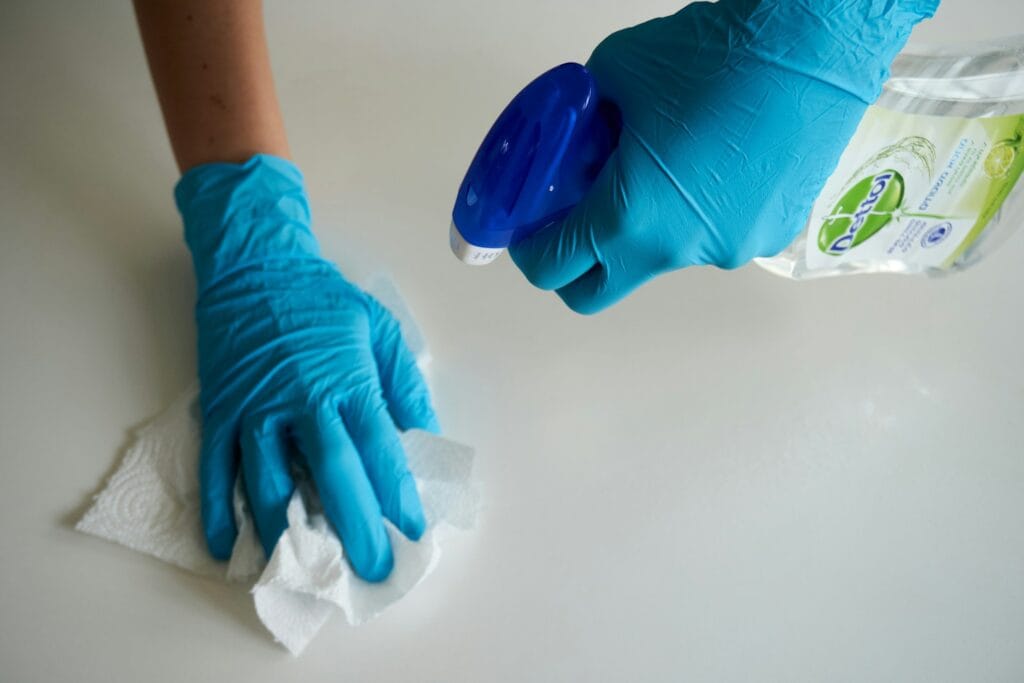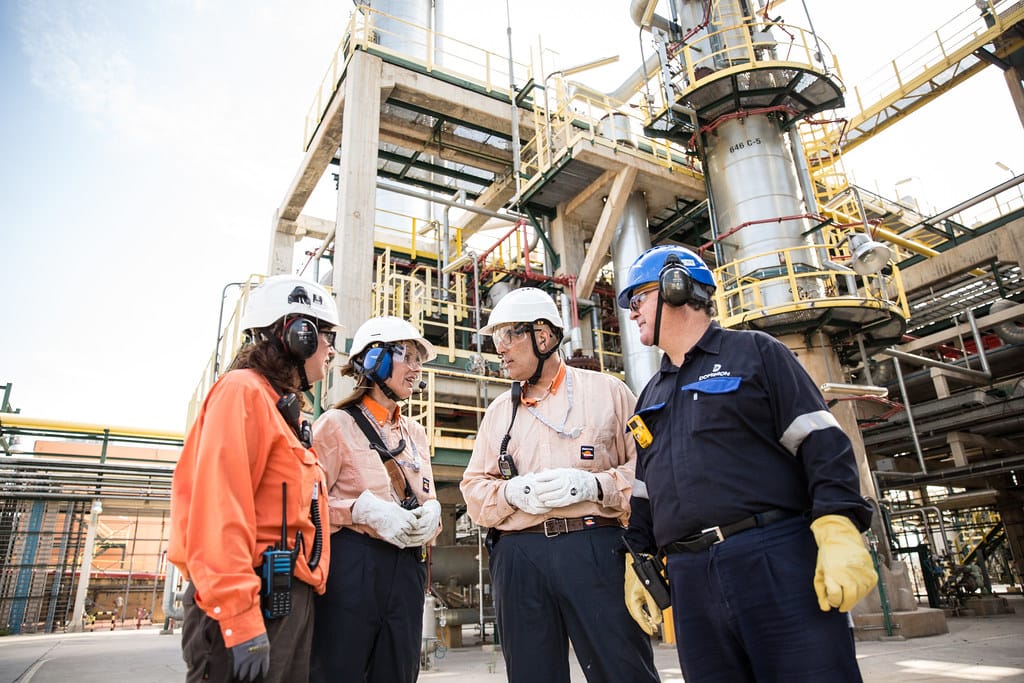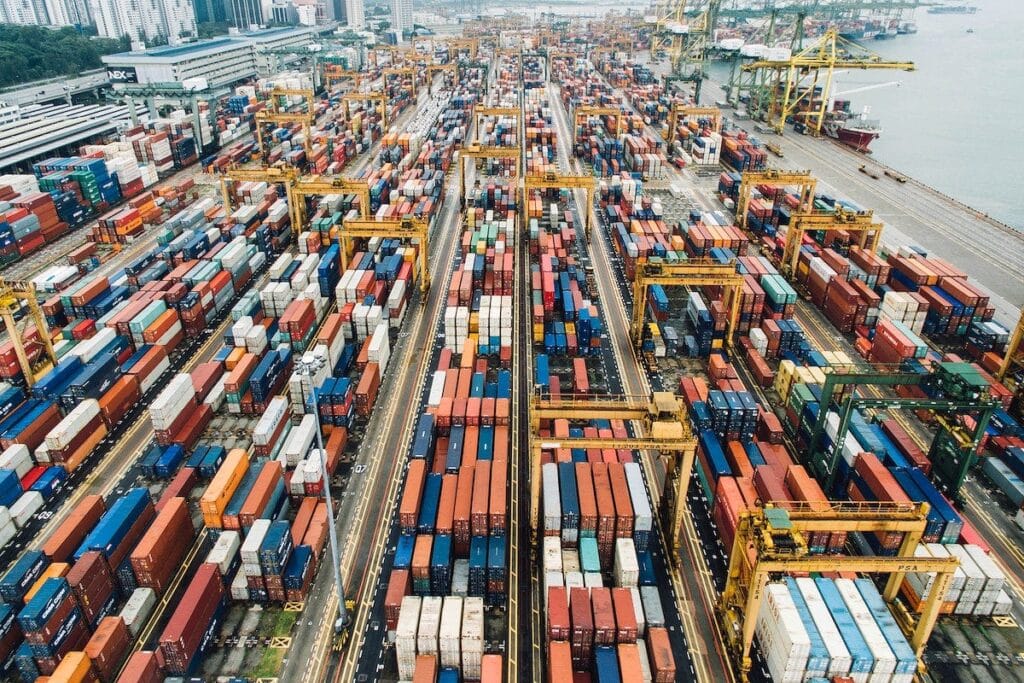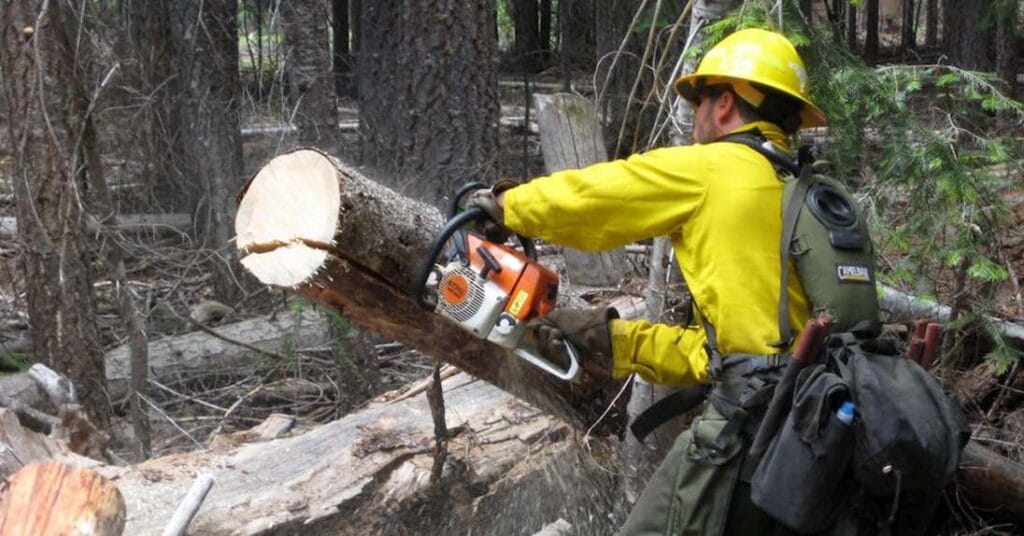
If you’ve ever imported workwear or PPE from China, you already know this truth: the product itself is only half the story. The real game begins after the deal is signed — when your money leaves your bank account and your cargo starts its journey across oceans, borders, and customs desks.
In my years working with global buyers — from Kazakhstan to Kenya, Saudi Arabia to Chile — I’ve seen how logistics and payment mistakes can erase months of effort. One wrong step with a payment method, forwarder, or document can turn a profitable deal into a financial nightmare.
That’s why this guide is about more than shipping routes or payment acronyms — it’s about control. How to keep control of your cash, your cargo, and your confidence.
🧭 Google Snippet: Quick Answer
T/T (bank transfer), L/C (Letter of Credit), and Alibaba Trade Assurance are the three safest payment methods when importing workwear or PPE from China.
Use T/T for repeat suppliers, L/C for large or government orders, and Trade Assurance for new vendors.
For logistics, weigh sea, air, and rail based on urgency, volume, and destination. Always verify customs documents, insure cargo, and lock exchange rates early to avoid loss and delays.
🚢 Why Logistics and Payment Are the Backbone of PPE Trade
Let’s face it — sourcing workwear is not just about choosing the right fabric or zipper. It’s a complex dance between cash flow, production time, and transportation risks.
When you’re managing hundreds or thousands of uniforms, even a small disruption can snowball:
- A late wire transfer delays production.
- A missing certificate traps your goods in customs.
- A sudden currency drop erases your margin.
Here’s why this topic matters:
- Thin margins — In the PPE industry, profit per piece is often $1–3. One week’s delay at the port can wipe that out.
- Volume shipments — Bulk orders mean big exposure. A single container of workwear can hold $50,000 worth of stock.
- Currency swings — The USD/CNY exchange rate can change by 3–5% in a month.
- Customs scrutiny — Workwear classified as “protective clothing” faces inspection for CE, EN, or ANSI certificates.
Think of logistics and payment as the “bloodstream” of your trade operation. It’s what keeps everything moving — quietly, constantly, and vitally.
💳 Understanding the Main Payment Methods
Choosing how to pay is not just about convenience — it’s about balancing trust, cost, and protection.
| Method | Best For | Pros | Cons | Risk Level |
|---|---|---|---|---|
| T/T (Telegraphic Transfer) | Trusted suppliers, small/medium orders | Simple, quick, globally accepted | No buyer protection before shipment | ⚠️ Medium |
| L/C (Letter of Credit) | Large government or corporate orders | Bank-guaranteed payment, secure | Complex paperwork, higher fees | ✅ Low |
| Alibaba Trade Assurance | First-time suppliers | Escrow protection, dispute support | Limited to Alibaba platform | ✅ Low |
| Western Union / MoneyGram | Sample payments only | Instant transfer | No recourse or protection | ❌ High |
🔹 When to Use Each Method
- T/T — Ideal once you’ve built trust. Typical term: 30% deposit, 70% before shipment.
- L/C — Use for big contracts ($50,000+) where the buyer’s bank wants assurance.
- Trade Assurance — Great for first-time cooperation, protects both parties.
- Escrow Payment — Used in some B2B portals or marketplaces; small volume, lower risk.
✅ Pro Tip: Always avoid 100% advance payments. Keep at least 30–40% pending until shipment passes QC or inspection.
🚛 Choosing the Right Shipping Method
Selecting the wrong transport mode can double your cost or delay your delivery by weeks. Here’s what you need to know:
| Mode | Transit Time | Best For | Cost Level | Key Notes |
|---|---|---|---|---|
| Sea Freight | 25–45 days | Bulk orders, non-urgent PPE | 💰 Low | Most cost-effective for FCL or LCL |
| Rail Freight | 15–25 days | Central Asia, Eastern Europe | ⚖️ Medium | Balance of cost and speed |
| Air Freight | 5–10 days | Urgent or seasonal orders | 💸 High | Ideal for high-value PPE |
| Courier (DHL/UPS/FedEx) | 3–7 days | Samples, small shipments | 💎 Very High | Fastest, but costly per kg |
🔹 Real Examples of Logistics Choices
- Kenyan importer shipping 5,000 safety vests via sea: $2,100 total, 40 days transit.
- Kazakh distributor using rail from Yiwu: $3,800 total, 22 days transit.
- Saudi buyer using air freight for urgent flame-resistant suits: $5,500, 7 days.
✅ Pro Tip: Book logistics 2–3 weeks in advance, especially before major Chinese holidays like Golden Week or Spring Festival.
📦 Case Study: Central Asia Buyer Saves 30% with Shared Container
Case: Kazakhstan Distributor – 2023
A PPE distributor in Almaty planned to import 2,000 reflective jackets. But his volume didn’t fill a full container (FCL).
Instead of paying high air freight, he joined a consolidation (LCL) shipment with another importer.
- Cost per kg: $1.80 instead of $2.60
- Transit time: 20 days
- Total savings: 30% logistics cost reduction
This approach required coordination but built a long-term partnership with a trusted forwarder. Now, he repeats consolidated shipments monthly, maintaining steady stock levels without overpaying for logistics.
🌍 More Buyer Stories
Case #2 – Nigerian Importer (Sea Freight Delays)
A Nigerian importer of safety boots used the cheapest forwarder he could find online. The ship arrived 15 days late due to transshipment and customs delays. He missed a major oil company tender and lost a $60,000 opportunity.
Lesson: Cheap shipping isn’t real saving. Reliability is.
Case #3 – Saudi Distributor (Payment Risk)
The buyer paid 100% T/T in advance to a supplier he met through WhatsApp. The supplier disappeared after receiving funds.
Outcome: Lost $9,000.
Fix: The next time, he used Alibaba Trade Assurance and third-party inspection — and recovered his confidence in importing.
Case #4 – Chilean Retailer (Currency Loss)
Exchange rate between USD and CLP dropped suddenly. His $15,000 order cost $900 more by payment date.
Tip: Use a forward contract or lock-in exchange rate early through your bank.
⚠️ Common Pitfalls to Avoid
- Paying full in advance — No leverage if supplier delays.
- Unclear Incoterms (FOB/CIF/EXW) — Leads to double payment for transport.
- Skipping insurance — Lost containers happen more than you think.
- Ignoring customs requirements — Missing CE or HS code means detention.
- Underestimating currency volatility — Always price in USD or hedge risk.
- Not tracking shipments — Ports in Africa and South America are prone to delay.
✅ Pro Tip: Always request packing photos, bill of lading copies, and certificate scans before the balance payment.
🧮 Risk Management Table
| Risk | How It Happens | How to Prevent It |
|---|---|---|
| Fake Supplier | Scammers on B2B platforms | Verify business license, request video call |
| Certificate Issues | Fake or expired CE/FDA | Verify with issuing lab or database |
| Port Delay | Missing documents | Confirm all files before ship departure |
| Exchange Loss | Sudden currency drop | Pay in USD or use currency lock |
| Transport Damage | Poor packaging or rain | Use export-grade pallets, insurance |
| Payment Dispute | Wrong bank or invoice name | Double-check account details |
⚓ Comparing CIF, FOB, and EXW
| Incoterm | Who Handles Freight | Risk Transfer Point | Recommended For |
|---|---|---|---|
| EXW (Ex-Works) | Buyer | At factory | Experienced importers with own agents |
| FOB (Free On Board) | Supplier (to port) | Once cargo on board | Balanced for most buyers |
| CIF (Cost, Insurance, Freight) | Supplier | After destination port | Best for new importers |
✅ Pro Tip: Ask your supplier to quote FOB + CIF so you can compare both options transparently.
🧰 Practical Tools
✅ Payment & Logistics Risk Checklist
| Task | Objective | Status |
|---|---|---|
| Verify supplier credentials | Ensure legitimacy | ☐ |
| Confirm payment method (T/T, L/C, etc.) | Balance cost and safety | ☐ |
| Choose correct Incoterm | Avoid double charges | ☐ |
| Request full shipping docs | Prevent customs issues | ☐ |
| Purchase cargo insurance | Protect against loss | ☐ |
| Track shipment in real time | Minimize delay impact | ☐ |
📧 Email Template – Payment & Shipment Confirmation
Subject: Confirmation of Payment Terms & Shipping Plan
Dear [Supplier Name],
Please confirm the following before payment:
1. Payment Term: 30% deposit, 70% before shipment (T/T)
2. Incoterm: FOB Shanghai
3. Shipment Mode: Sea freight (LCL)
4. Estimated Ship Date: [Date]
5. Inspection: Third-party QC before shipment
6. Required Documents: Invoice, Packing List, Bill of Lading, CE Certificate
Kindly confirm and issue the updated Proforma Invoice.
Best regards,
[Your Name]
[Your Company]
[Your Country]Regional Shipping Cost Comparison (2025 Estimated)
| Route | Mode | Average Cost (USD) | Transit Time | Notes |
|---|---|---|---|---|
| China → Nigeria | Sea Freight | $2,300 / 20’ FCL | 35–40 days | Common route via Guangzhou |
| China → Saudi Arabia | Sea Freight | $1,850 / 20’ FCL | 25–30 days | Stable transit time |
| China → Kazakhstan | Rail Freight | $3,800 / container | 20–25 days | Cost-effective alternative |
| China → Brazil | Sea Freight | $3,500 / 20’ FCL | 40–45 days | Longer route but steady |
| China → Kenya | Sea Freight | $2,000 / 20’ FCL | 30–35 days | Regular sailings via Mombasa |
Conclusion
Cross-border trade success doesn’t come from luck — it comes from discipline. When you combine the right payment method, logistics plan, and risk control, every shipment becomes smoother, safer, and more profitable.
In global PPE and workwear sourcing, trust is built through structure — clear terms, verified documents, and transparent logistics.
If you do that right, you’ll not only protect your money… you’ll protect your future business.
📩 For verified, export-ready workwear suppliers: Email: [email protected]
🌐 Website: www.workwearsolutions.net
Zion Zhang
Recent Posts
 How to Build a Local Distribution Network That Works2025年10月10日In emerging markets across Africa, the Middle East, Central […]
How to Build a Local Distribution Network That Works2025年10月10日In emerging markets across Africa, the Middle East, Central […] Choosing the Right Sales Channels for Workwear in Emerging Markets2025年10月10日In fast-growing markets across Africa, the Middle East, […]
Choosing the Right Sales Channels for Workwear in Emerging Markets2025年10月10日In fast-growing markets across Africa, the Middle East, […] Building Long-Term Supplier Relationships: From First Order to Partnership2025年10月10日In the world of global workwear trade, many new importers […]
Building Long-Term Supplier Relationships: From First Order to Partnership2025年10月10日In the world of global workwear trade, many new importers […] Costing & Profit Margins: Calculating the Real Numbers2025年10月9日When importing workwear or PPE from China, the biggest […]
Costing & Profit Margins: Calculating the Real Numbers2025年10月9日When importing workwear or PPE from China, the biggest […] Certificates & Compliance: Spotting Fakes and Staying Legal2025年10月9日Certificates & Compliance: Spotting Fakes and Staying […]
Certificates & Compliance: Spotting Fakes and Staying Legal2025年10月9日Certificates & Compliance: Spotting Fakes and Staying […] Quality Control & Pre-Shipment Inspection: Avoiding Expensive Surprises2025年10月7日In international workwear trade, one of the most painful […]
Quality Control & Pre-Shipment Inspection: Avoiding Expensive Surprises2025年10月7日In international workwear trade, one of the most painful […]
CONTACT US
- Feel free to contact us any time. We will get back to you as soon as we can!
- +86-17303331701
